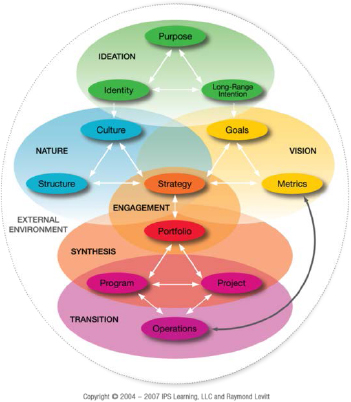As a Project Management Professional, one of the best ways to keep learning, is by attending Conferences. You get access to the latest industry trends, research, key note speakers and best of all, the connection and engagement with fellow practitioners, is priceless.
Here you will find a list of excellent project management conferences as well as agile gatherings that are planned for 2020 and will take place in different parts of the world. Most of them offer early bird discounts; so it’s a good idea to plan ahead and to register as early as possible.
More events will be added over time, so remember to visit the Virtual Project Consulting Event page in future for details.
FEBRUARY 2020
The Technical Project Management Conference
Date: 24 – 26 February 2020
Location: AMA Conference Center, Atlanta, USA

Project managers can learn how to create a technical project management environment covering different project management frameworks, life cycle, terminology and how to successfully lead teams. It will provide you networking opportunities so you can get in touch with hundreds of project management professionals.
Click here for more information.
International Conference on Lean Six Sigma and Project Management

Date: 21 – 22 February 2020
Location: Paris, France
The International Conference on Lean Six Sigma and Project Management is another event from the International Research Conference organization aiming to connect scientists from all over the world to consider Lean Six Sigma and PM challenges and suggest brand-new solutions and ideas.
Click here for more information.
MARCH 2020
PMI Sweden Passion for Projects Conference

Date: 9 – 10 March 2020
Location: The Clarion Hotel and Congress in Malmö Live, Sweden
PMI Sweden is an event with inspiring speakers, professional colleagues, and companies in different sectors gathered with the goal of sharing their knowledge and experience in project, portfolio, and programme management. The theme: “Orchestrating projects in a transformative world”.
Click here for more information.
APRIL 2020
International Scientific Conference on Project Management

Date: 23 – 24 April 2020
Location: Riga, Latvia
This Baltic States conference’s theme is “Project Management Development – Practice and Perspectives.” Its focus is on discussing scientific research related to project management issues and to encourage networking between professionals in the industry.
It takes place in English. Click here for more information.
MAY 2020
Change Management 2020

Date: 3 – 6 May 2020
Location: Anaheim, California, USA
The Association of Change Management Professionals (ACMP) is hosting their annual conference this year with the theme: “The Future of Work”.
It is your chance to network with other professionals who are spearheading change. The opening keynote speaker is Jacob Morgan, author and founder of the Future of Work University. It is being hosted at the Anaheim Marriott within walking distance of Disneyland making this a great conference to combine business with a vacation.
Click here for more information.
Global Scrum Gathering

Date: 11 – 13 May 2020
Location: New York, USA
The focus of this conference, hosted by Scrum Alliance, will be on taking Agile to the next level in your organization. There is a good mix of presentations, hands-on workshops and coaching. #SGNYC20 has a number of themes.
Click here for more information.
Agile and Beyond
Date: 19 – 21 May 2020
Location: Detroit, Michigan
Agile & Beyond is a grassroots, volunteer run conference that helps people learn about agile principles and practices as well as covers topics that help make people and companies awesome. With pre-conference workshops and over 130 conference sessions, there is a wide variety of topics for the agile newbie all the way to the agile expert.
Click here for more information.
APM Power of Projects Conference
Date: 21 May 2020
Location: London, UK
This year’s theme is “Power of Projects.” It is one in a series of three conferences, with other events happening in Edinburgh and Manchester. You don’t need to be a member of APM to attend.
Click here for more information.
JUNE 2020
PMO Conference

Date: 2 -3 June 2020
Location: London, UK
The PMO event, focused on portfolio, program, and project offices, suggests you to discover innovative approaches to your work. Join to get informed about the latest PMO research, next-generation solutions, and exchange insights with your peers.
Click here for more information.
PMI EMEA Global Congress

Date: 14 – 16 June 2020
Location: Prague, Czechia
The EMEA Congress 2020 will teach you the concepts, skills and behaviours to help shape the future. Attend for professional development with hundreds of Project, Programme and Portfolio managers from around the world.
Click here for more information.
OCTOBER 2020
PMI GLOBAL CONFERENCE 2020
Date: 17 – 19 October 2020
Location: Seattle, Washington
The Project Management Institute (PMI) is the largest association of project management professionals. PMI global conference is one of the largest gatherings of the year and the details are being finalised.
Click here for more information.
Please subscribe to Virtual Project Consulting not to miss any future updates, especially on Events





































 Recently PMI has conducted their 8th global project management survey and published the results in the PMI’s Pulse of the Profession 2016 Report, called: “The High Cost of Low Performance”.
Recently PMI has conducted their 8th global project management survey and published the results in the PMI’s Pulse of the Profession 2016 Report, called: “The High Cost of Low Performance”.

 As project managers, we are all inundated with emails daily. Therefore, I want to share the 6 Time Management tips to manage your email from
As project managers, we are all inundated with emails daily. Therefore, I want to share the 6 Time Management tips to manage your email from 